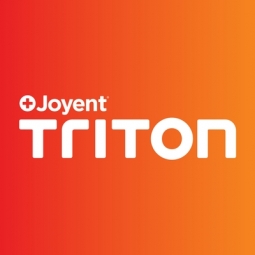技术
- 基础设施即服务 (IaaS) - 云中间件与微服务
- 平台即服务 (PaaS) - 应用开发平台
适用行业
- 水泥
- 建筑与基础设施
适用功能
- 物流运输
用例
- 施工管理
- 时间敏感网络
服务
- 云规划/设计/实施服务
- 系统集成
关于客户
EdgeMesh 是一家领先的 Web 加速公司,专注于客户端、边缘本机优化,帮助客户提供更安全、更可靠且速度提高 2-10 倍的 Web 体验。与传统平台不同,EdgeMesh 需要零基础设施更改,并且通过向任何网站添加一行代码来实现。 EdgeMesh 在全球超过 138 个国家/地区的 8500 多个网络上运行,改变了全球范围内的网络交付方式,帮助企业消除高达 90% 的复杂且昂贵的全球带宽费用,同时提供更快、更可靠的边缘优化。
挑战
EdgeMesh 是一家网络加速公司,旨在通过一个小团队颠覆成熟的 80 亿美元内容交付市场。面临的挑战是构建和部署在性能和广度上都优越的服务。他们需要提供超低延迟、全局、边缘本机解决方案,核心服务响应时间低于 1 毫秒,并将其扩展为每秒处理数千万条消息。这需要一种能够提供高性能、可扩展性和深度自省功能且无需更改任何基础设施的解决方案。
解决方案
EdgeMesh 选择 Joyent Triton 云计算、Joyent Manta 对象存储和 Joyent ContainerPilot 容器编排是因为其性能和简单性。 EdgeMesh 的创始人根据之前与华尔街构建的基础设施即服务提供商的经验,熟悉 Joyent 的性能优化选项和深度自省功能。 EdgeMesh 采用了基于 Docker 的 Linux 本机部署,使用 Triton 提供的内置模拟层。每个 Joyent Triton 软件定义的数据中心都是一个统一的“Docker 主机”,允许 EdgeMesh 部署系统包含在单个 Docker Compose 文件中。他们与 Joyent Containerpilot 相结合,创建了一个自我管理、自我扩展的全球平台。 EdgeMesh还为整个系统的日常部署开发了“Clean Slate Protocol”,确保一致的部署方法,减少平台的攻击面,并确保一致的自我扩展。
运营影响
数量效益

Case Study missing?
Start adding your own!
Register with your work email and create a new case study profile for your business.
相关案例.

Case Study
System 800xA at Indian Cement Plants
Chettinad Cement recognized that further efficiencies could be achieved in its cement manufacturing process. It looked to investing in comprehensive operational and control technologies to manage and derive productivity and energy efficiency gains from the assets on Line 2, their second plant in India.

Case Study
IoT System for Tunnel Construction
The Zenitaka Corporation ('Zenitaka') has two major business areas: its architectural business focuses on structures such as government buildings, office buildings, and commercial facilities, while its civil engineering business is targeted at structures such as tunnels, bridges and dams. Within these areas, there presented two issues that have always persisted in regard to the construction of mountain tunnels. These issues are 'improving safety" and "reducing energy consumption". Mountain tunnels construction requires a massive amount of electricity. This is because there are many kinds of electrical equipment being used day and night, including construction machinery, construction lighting, and ventilating fan. Despite this, the amount of power consumption is generally not tightly managed. In many cases, the exact amount of power consumption is only ascertained when the bill from the power company becomes available. Sometimes, corporations install demand-monitoring equipment to help curb the maximum power demanded. However, even in these cases, the devices only allow the total volume of power consumption to be ascertained, or they may issue warnings to prevent the contracted volume of power from being exceeded. In order to tackle the issue of reducing power consumption, it was first necessary to obtain an accurate breakdown of how much power was being used in each particular area. In other words, we needed to be able to visualize the amount of power being consumed. Safety, was also not being managed very rigorously. Even now, tunnel construction sites often use a 'name label' system for managing entry into the work site. Specifically, red labels with white reverse sides that bear the workers' names on both sides are displayed at the tunnel work site entrance. The workers themselves then flip the name label to the appropriate side when entering or exiting from the work site to indicate whether or not they are working inside the tunnel at any given time. If a worker forgets to flip his or her name label when entering or exiting from the tunnel, management cannot be performed effectively. In order to tackle the challenges mentioned above, Zenitaka decided to build a system that could improve the safety of tunnel construction as well as reduce the amount of power consumed. In other words, this new system would facilitate a clear picture of which workers were working in each location at the mountain tunnel construction site, as well as which processes were being carried out at those respective locations at any given time. The system would maintain the safety of all workers while also carefully controlling the electrical equipment to reduce unnecessary power consumption. Having decided on the concept, our next concern was whether there existed any kind of robust hardware that would not break down at the construction work site, that could move freely in response to changes in the working environment, and that could accurately detect workers and vehicles using radio frequency identification (RFID). Given that this system would involve many components that were new to Zenitaka, we decided to enlist the cooperation of E.I.Sol Co., Ltd. ('E.I.Sol') as our joint development partner, as they had provided us with a highly practical proposal.

Case Study
Splunk Partnership Ties Together Big Data & IoT Services
Splunk was faced with the need to meet emerging customer demands for interfacing IoT projects to its suite of services. The company required an IoT partner that would be able to easily and quickly integrate with its Splunk Enterprise platform, rather than allocating development resources and time to building out an IoT interface and application platform.

Case Study
Bridge monitoring in Hamburg Port
Kattwyk Bridge is used for both rail and road transport, and it has played an important role in the Port of Hamburg since 1973. However, the increasing pressure from traffic requires a monitoring solution. The goal of the project is to assess in real-time the bridge's status and dynamic responses to traffic and lift processes.

Case Study
Bellas Landscaping
Leading landscaping firm serving central Illinois streamlines operations with Samsara’s real-time fleet tracking solution: • 30+ vehicle fleet includes International Terrastar dump trucks and flatbeds, medium- and light-duty pickups from Ford and Chevrolet. Winter fleet includes of snow plows and salters.




